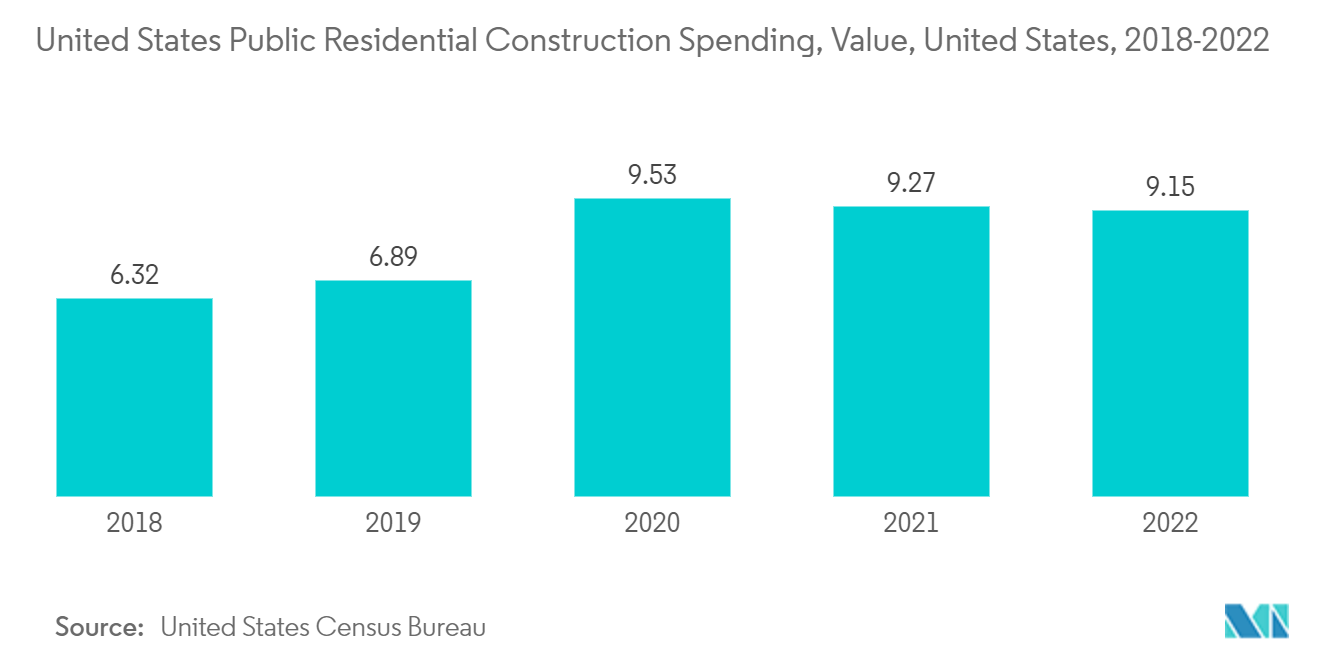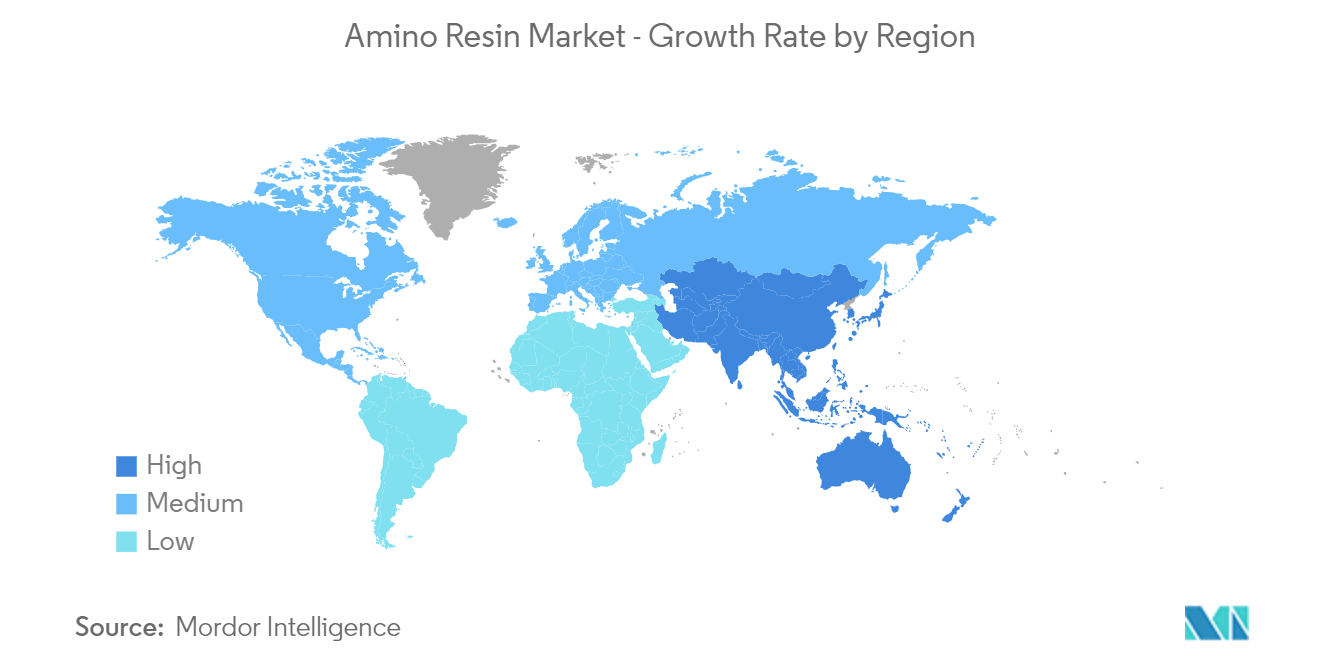Market Trends of Amino Resin Industry
Increasing Demand from the Adhesives and Sealants Industry
- Significant applications of amino resin are in adhesives and sealants in the wood paneling industry for products such as hardwood plywood, chipboard, particleboard, medium-density fiberboard, sawdust board, etc.
- With the increasing housing construction and population, across the world, the demand for plywood, chipboard, particleboard, medium-density fiberboard, sawdust board, etc., for furniture, such as chairs, tables, beds, sofas, shelves, and cupboards, is increasing significantly.
- In the furniture industry, concepts related to the interiors of homes, offices, and flats are changing continuously. This is driving innovation and development, primarily in terms of designs, size, and colors. This is expected to augment the consumption of urea-formaldehyde (UF), melamine-formaldehyde (MF), and melamine-urea-formaldehyde (MUF) to be used mainly as adhesives in the wood paneling industry.
- In the United States, according to the Mortgage Bankers Association (MBA) forecasts, single-family housing is expected to be around 1.210 million in 2023.
- The United States boasts a colossal construction sector that employs over 7.6 million employees. According to the United States Census Bureau (USCB), in 2022, the value of construction was USD 1,792.9 billion, a 10.2% increase over the USD 1,626.4 billion spent in 2021.
- Further, as per further statistics generated by the USCB, the annual value for new construction put in place in the United States accounted for USD 1,657,590 million in 2022, compared to USD 1,499,822 million in 2021. Moreover, the annual value of residential construction put in place in the United States was valued at USD 849.16 billion in 2022, compared to USD 740.64 billion in 2021. The annual value of non-residential construction put in place in the country was valued at USD 808.43 billion in 2022, compared to USD 759.18 billion in 2021, thereby decreasing the consumption of the market studied in the short term.
- Hence, due to the factors mentioned above, the adhesives and sealants segment is expected to dominate the amino resin market during the forecast period.

Asia-Pacific Region to Dominate the Market
- The Asia-Pacific region is expected to be the dominant market in amino resin consumption. This is because the region dominates the market for end-use industries such as adhesives & sealants, paints & coatings, the textile industry, etc.
- The Asia-Pacific region constitutes one of the largest markets, accounting for more than 40% of the demand for paints & coatings worldwide. The region's commanding share of the market is expected to expand even further, driven by the continued population growth, urbanization, and spending power in countries like China, Japan, South Korea, India, and Southeast Asian nations. Amino resins are used as binders in paints and coatings.
- The rising household income levels, combined with the population migrating from rural to urban areas, are expected to continue to drive the demand for the residential construction sector in the country. The increased focus on affordable housing by both the public and private sectors is driving the growth in the residential construction sector.
- Non-residential infrastructure is expected to grow considerably. The aging population in the country is creating a demand for the construction of healthcare facilities and new hospitals. The structural changes in the Chinese economy over the past few years, with the service sector taking a larger share of the total gross domestic product (GDP), gave rise to the construction of huge commercial and office spaces.
- Bangladesh is a major exporter of textiles to countries such as the United States, European countries, India, China, and others. As per data published by Export Promotion Bureau (EPB), in 2022, the country exported garments worth USD 42.613 billion.
- The Indonesian government encourages the increase of productivity and competitiveness of the textile industry by providing investment incentives to stimulate the use of more modern and environmentally friendly equipment. For instance, under the Industry 4.0 master plan, textile and garments are one of five targeted industries that the country plans to put in extra effort to develop.
- Thus, rising demands from the above-mentioned end-user industries are expected to drive growth in the Asia-Pacific region.


